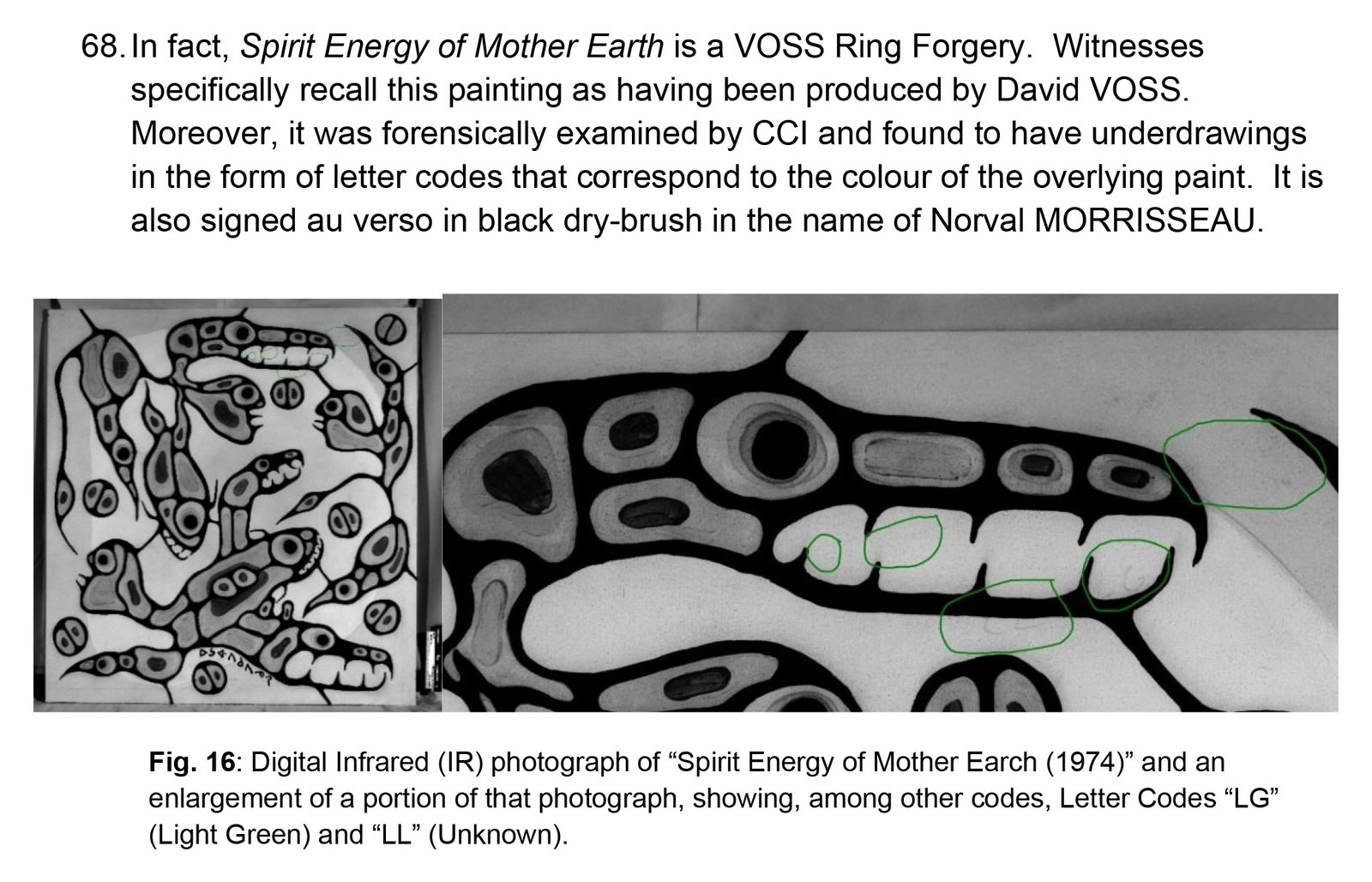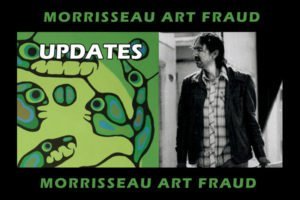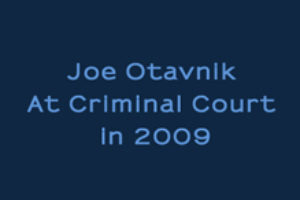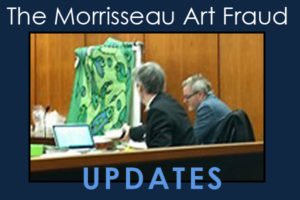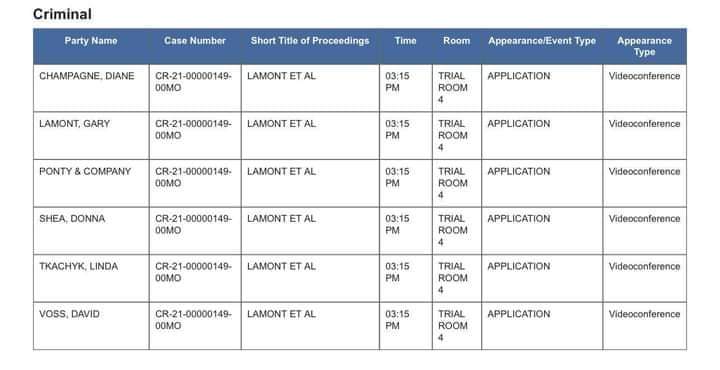Judgment Excerpts

Judgment, May 24 2018 Hearn v Maslak McLeod
[29] In any case, McLeod’s responses to Hearn regarding the AGO incident inspired no confidence. Hearn had suffered a tremendous embarrassment and disappointment, and he considered the dealer from whom he bought the painting as the source of all of that. Hearn was thus inclined to disbelieve McLeod and to believe Ritchie Sinclair, who he described as a “devoted friend” of Norval Morrisseau’s and an artist in his own right.
[30] In cross-examination, Hearn described himself as a “trusting person” by nature. When he bought Spirit Energy, he trusted McLeod. And when Spirit Energy was challenged, he trusted Sinclair.
[31] It is unclear in the evidence how Sinclair came to know anything about Spirit Energy, or how and why he went about advising the AGO of his view. It is equally unclear why the AGO so readily heeded Sinclair’s unsolicited advice. After all, everyone, including Hearn’s own expert, Dr. Robertson, agrees that if Spirit Energy is not authentic it is a very good imitation. Indeed, Dr. Robertson, a noted scholar with substantially more training than Sinclair, took 50 pages to come to the subtly stated conclusion that, “The disparate elements discussed throughout this report, when taken as a whole, result in an artistic dissonance with Morrisseau’s artistic style, conventions, and art practice.” And yet, Sinclair appears to have concluded in a single glance, with supreme confidence, that the painting was a forgery.
[32] I note that Sinclair was not called to testify at trial. I also note that, likewise, neither Gerald McMaster nor any staff member of the AGO was called to testify. What the record contains are some short email messages from McMaster and other AGO employees to Hearn which are rather non-committal, and which indicate a concern for Hearn’s feelings and express a desire to try to resolve the situation, etc. I can imagine that the AGO staff may have been reticent to involve themselves in a litigious matter; although, frankly, they acted very quickly on the advice of a questionable source. I do not know whether the failure to call anyone from the AGO as a witness indicates that they may not now be as supportive as Plaintiff’s counsel would like. Their testimony, with some pointed cross-examination, may have provided some insight into what happened behind the scenes, but the court will never have that insight.
[33] As for Ritchie Sinclair, the failure to call him – the very source of the entire controversy over the painting owned by Hearn – is more interesting. A survey of law reports in recent years shows that he has been deeply involved in litigation concerning Norval Morrisseau, often in alliance with or in support of cases brought by Kevin Hearn’s present counsel. He likewise has often played the part of the instigator of the controversies, and has equally often been held to be in the wrong. For this reason, counsel for the Intervenors here has dubbed him the “source of misinformation” about Spirit Energy and other Morrisseau works.
[34] In an earlier, pre-trial ruling I observed that Sinclair was proposed as a witness by Hearn’s counsel, and that, in fact, he had previously been a defendant in a defamation action brought by Joseph McLeod and his Gallery – McLeod et al. v. Sinclair, CV-08-00366828. In that case, like in this one, Sinclair had asserted that certain Morrisseau works sold by the Gallery were forgeries. That prompted McLeod to bring an action against him to recover the economic losses that those assertions caused. In an interlocutory motion, Sinclair was ordered to place an advisory on every page of his website signaling that his claims were unproven; in fact, the court required him to do that every time he “opines that any work attributed to Norval Morrisseau is a fraud, forgery, counterfeit, stolen or in any other way is not authentic or genuine”: McLeod et al. v. Sinclair, 2008 CanLII 67901, at para 41 (SCJ).
[35] In yet another case with players and subject matter that overlap with this one, James White, an Intervenor here, sued Sinclair for slander of title with respect to Morrisseau paintings that White owned, contending that, once again, Sinclair had asserted that a number of Morrisseau works are, as quoted in White’s claim, “‘Counterfeit’, ‘Forged’ ‘Bogus’, ‘Fake’, ‘Fraudulent’”. I understand that in 2015, the claim went to trial and that Mr. White was the successful party: White v. Sinclair, SC-10-109226 (Sm Cl Ct).
[36] Finally, in Hatfield v. Child, 2013 ONSC 7801, a plaintiff represented by Hearn’s present counsel alleged that a Morrisseau painting she had purchased was not an authentic Morrisseau and that the black brush signature purporting to be Norval Morrisseau’s on the verso of the painting was a forgery. The court rejected the evidence of none other than Ritchie Sinclair, who was presented as a witness on behalf of the plaintiff in that case. The trial court, as upheld on appeal to the Divisional Court, accepted that the painting was an authentic Morrisseau painting. In the process of doing so, the Court found that Sinclair’s views on the Morrisseau painting in issue there were “unsupported and unreliable” [para 18], while it found that Joseph McLeod, who had done an appraisal of the painting in issue, was “a credible witness”: Ibid., para 26.
[37] All of this is to say that Sinclair’s intervention with the AGO can be viewed in a number of ways. While Hearn seems to perceive Sinclair as a saviour attempting to spread truth about Morrisseau art works, the courts have tended to see him as an officious intermeddler wrongfully identifying works as forgeries without a basis for doing so. I do not know why, but he appears to be on a campaign to undermine the authenticity and value of works by Norval Morrisseau, although to date the courts have responded negatively to that campaign.
[38] This history of findings that Sinclair is unreliable undoubtedly provides an answer to why he was not called by Hearn’s counsel to testify about his intervention with the AGO here. At the same time, it fosters considerable skepticism as to whether the AGO’s decision to remove the painting from its exhibit was the right one. If history provides any clue, there is reason to believe that Sinclair was no more correct about Spirit Energy of Mother Earth than he was about Wheel of Life, the Morrisseau painting at issue in Hatfield. The AGO may well have acted in excessive haste and at the behest of someone who has made himself into a figure that is better for the art world to avoid than to rely on.
Excerpt from the erroneous Judgment of E.M. Morgan (2018) Overturned on Appeal
Appeal Judgment | September 3, 2019 | Hearn v. McLeod Estate
Crown v Voss
SCJ | Crown v Voss | June 4 2024 | Guilty Plea
CBC Radio
Globe & Mail | March 11 2023 | Woodland art market took a hit over forgery rumours.
“The only way to release the market is to separate the fakes from the real things,” Mr. Sinclair said. “As Morrisseau goes, so goes all those who spawn from him.”
In 2008, Mr. Sinclair established a website displaying upward of 1,000 Morrisseau pieces he identified as forgeries. Since then he’s faced extensive litigation from collectors and gallery owners whose inventory he placed under suspicion. One gallery owner, Joe McLeod, even had Mr. Sinclair arrested for harassment; Mr. Sinclair said he spent 24 hours in jail. The charge was dismissed more than a year later when Mr. McLeod failed to attend trial and the Crown declined to call any evidence.
“That’s the worst thing that happened to me, but the list goes on for a mile,” Mr. Sinclair said.
CBC | Dec 14 2023| Ringleader in Norval Morrisseau art fraud ring sentenced to 5 years on fraud charges
Smithsonian Magazine | March 2024 | Inside the Biggest Art Fraud in History
The Walrus | April 5 2024 | The “Multi-Multi-Multi-Million-Dollar” Art Fraud That Shook the World
Canadian Press | June 5 2024 | Another man pleads guilty in mass forgery of Norval Morrisseau’s artworks
Hatfield v Artworld of Sherway
SCJ | Crown v Voss | June 4 2024 | Guilty Plea
Sinclair on CTV Canada AM (2014)
Judgment | March 25 2013 | Hatfield v Artworld
“Mr. Ritchie Sinclair testified in reply that it was his opinion that Wolf Morrisseau, Christian Morrisseau, Eugene Morrisseau, Benji Morrisseau and Gary Lamont were all involved in producing fake paintings. Mr. Joseph McLeod’s testimony is preferred to that of Mr. Ritchie Sinclair. Mr. Sinclair’s testimony of numerous forgers paid for with drugs was not supported by the evidence.”
Excerpt from the erroneous Judgment of Paul J. Martial




